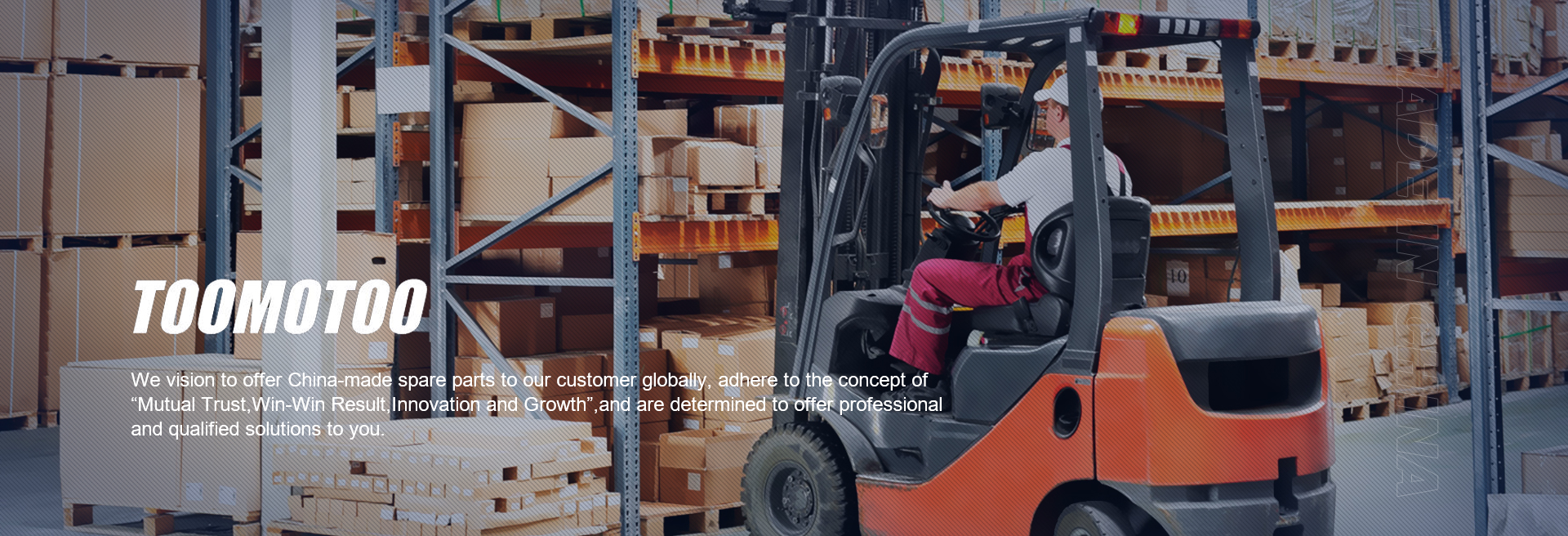
Time: 2023-11-30
Source: TOOMOTOO
Author: TOOMOTOO
Click: 321 times
Manual hydraulic forklift is a type of forklift that we often use in our work and daily life. During our use, many problems have arisen due to improper operation or maintenance. Today, TOOMOTOO will explain the reasons why manual hydraulic forklifts cannot be lifted:

1.The wear gap between the valve stem and valve body is too large:
there are three grooves on the lifting rod of the multi way directional valve. The combination of grooves and oil circuits can connect or cut off oil circuits, and modify task formulation. The gap between the excellent distribution valve stem and valve body is very small, and there is very little oil leakage. Therefore, the landing or tilting of the hydraulic cylinder is very small and does not affect the task. However, when the wear gap is too large, under the pressure of the task pump, hydraulic oil will form oil in the task pipeline connected to the return oil pipeline or spillway, and automatically return to the oil tank. Due to the long service life or unclean oil of the distribution valve, the wear of the valve stem and valve body will slow down, and the sealing surface of the joint will be damaged, leading to oil leakage. When repairing, if the valve stem is slightly worn, chrome polishing can be used; If the valve stem is severely worn, it needs to be replaced.
2. Cone valve wear:
Cone valves are used to prevent oil backflow. If the cone valve is worn and the oil passage is not tightly closed, it will cause hydraulic oil to flow back, making the system effective. When repairing, it should be ground or exchanged to eliminate backflow.
3. Valve body leakage oil:
The sealing between the valve stem and valve body is completed by O-ring sealing. If the sealing ring ages or protects, hydraulic oil will flow out along the valve stem under the influence of system pressure, resulting in valve body leakage oil. To solve this problem, simply exchange the O-ring seal.
4. Insufficient purity of oil:
It is necessary to remove the oil cylinder and remove impurities from the contact surface between the bottom plate and the 7-diameter steel ball.
Therefore, when operating a manual hydraulic forklift, we need to pay attention to the following:

1. Before entering the heatstroke prevention period, prepare in advance and release winter lubricating grease from the engine, drive axle, transmission, steering gear, etc. After cleaning, add summer lubricating grease according to regulations.
2. Clean the water channel, remove scale from the cooling system, and unclog the radiator fins. Regularly check the tightness of the fan drive belt.
3. Adjust the generator regulator appropriately to reduce the charging current of the generator.
4. Pay attention to preventing engine overheating during homework, and always pay attention to the reading on the coolant temperature gauge. If the coolant temperature is too high, take cooling measures. To maintain the amount of coolant, be careful when adding to prevent scalding caused by coolant boiling.
5. Regularly check the temperature and air pressure of the tires, and if necessary, stop in a cool place until the tire temperature drops before continuing work. Do not use methods such as deflation or pouring cold water to reduce pressure and temperature, in order to avoid reducing the service life of the tires.
6. Regularly check the braking efficiency to prevent brake failure caused by aging, expansion deformation, and vaporization of brake fluid in the brake master cylinder or cylinder cup.
<< Previous page
Next page >>
LINKS:
Harber Metal